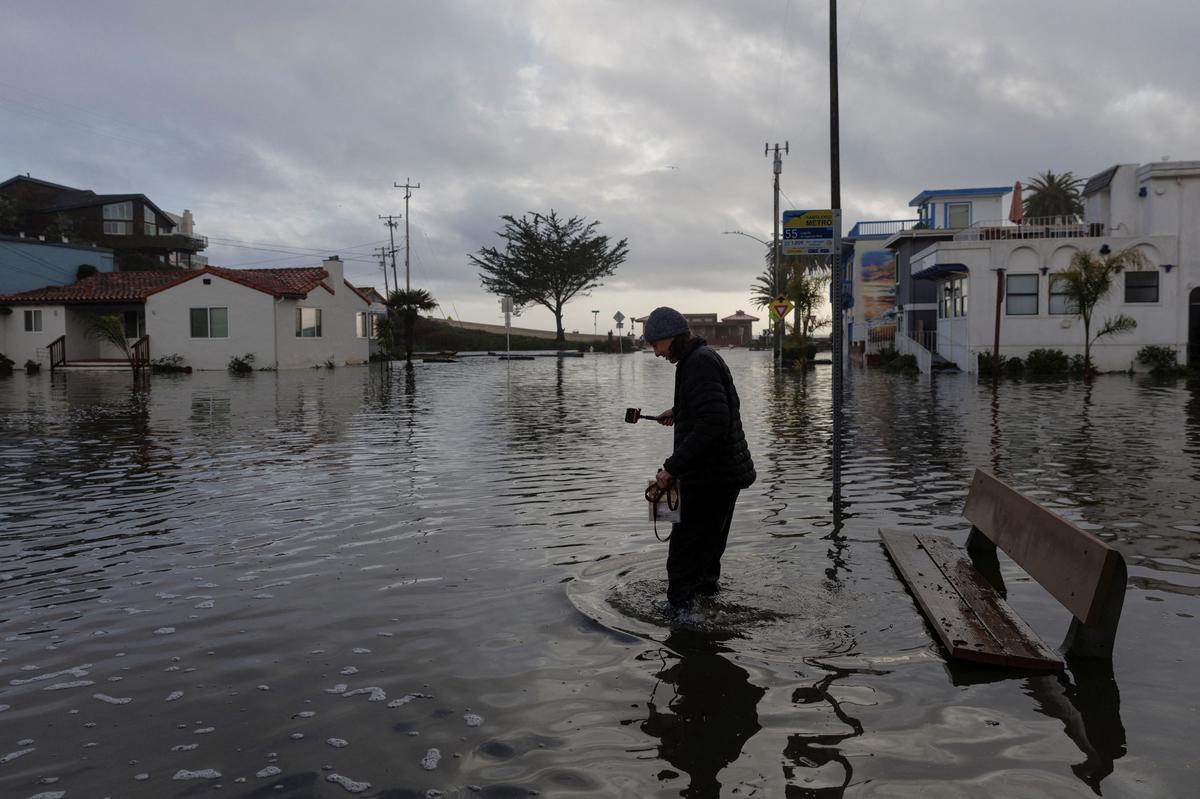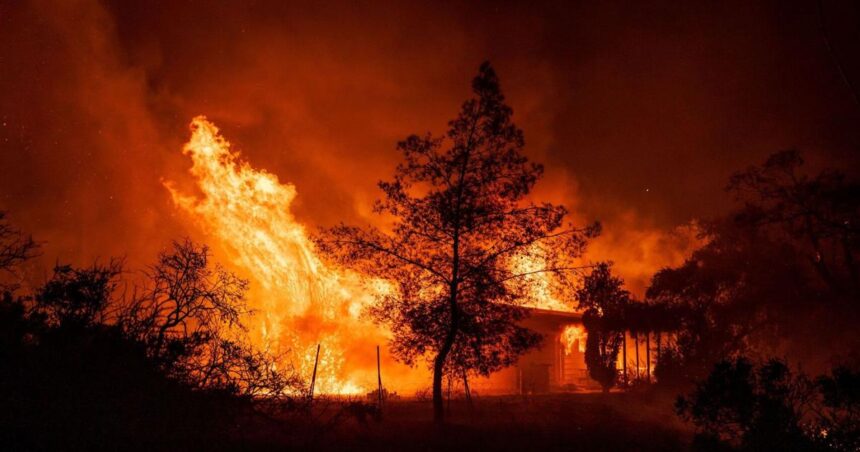Hurricane Helene, a powerful storm fueled by warming ocean temperatures, is barreling towards North Carolina, poised to unleash heavy rainfall, dangerous winds, and severe flooding. The storm’s approach has triggered widespread emergency warnings, with authorities urging residents to evacuate from high-risk zones. This storm is yet another example of how climate change is intensifying weather patterns, increasing both the frequency and severity of natural disasters.
Expanding the Story: The Arrival of Hurricane Helene
As Hurricane Helene gains strength over the Atlantic, its projected path indicates a direct hit on North Carolina’s coast. According to meteorologists, the storm is expected to bring up to 20 inches of rain in some areas, leading to life-threatening floods. Strong winds of over 100 miles per hour are also anticipated, raising concerns about power outages, structural damage, and potential loss of life.
For coastal communities, the most significant danger comes from storm surges, which are expected to be as high as 12 feet in some places. Combined with the already saturated ground from prior storms, the potential for catastrophic flooding is immense. Local emergency services are preparing shelters, reinforcing infrastructure, and coordinating evacuation plans to minimize the impact. But even with these preparations, the arrival of Hurricane Helene will likely leave a trail of destruction.

Climate Change: The Amplifier of Extreme Weather
Climate scientists have long warned that global warming would make hurricanes like Hurricane Helene more frequent and more destructive. Rising ocean temperatures provide more fuel for hurricanes, increasing their intensity and rainfall. According to a 2022 report by the Intergovernmental Panel on Climate Change (IPCC), the number of Category 3 or higher hurricanes has risen sharply in recent decades due to the effects of climate change.
Dr. Jennifer Hayes, a climate scientist at the National Oceanic and Atmospheric Administration (NOAA), explains: “As ocean temperatures rise, they provide more heat energy to tropical storms. This is why we’re seeing more hurricanes with higher wind speeds and heavier rainfall than in the past.” In the case of Hurricane Helene, the warmer-than-usual Atlantic Ocean has helped it intensify more rapidly than initially predicted.
The flooding caused by Hurricane Helene is also a sign of the increasing risks posed by climate change. A report from the National Flood Insurance Program (NFIP) highlights that states like North Carolina have seen a 67% increase in flood-related damage over the past ten years. This trend is driven not just by stronger storms, but by an infrastructure system that is often ill-prepared for the escalating climate crisis.
Impact on North Carolina Communities
North Carolina is no stranger to hurricanes, but Hurricane Helene comes at a time when the state’s infrastructure is already stretched thin by previous storms. Coastal towns like Wilmington, New Bern, and Morehead City are expected to be among the hardest hit. Flood-prone regions along the Cape Fear River are particularly vulnerable, and emergency services are on high alert as riverbanks may overflow, leading to widespread damage to homes and businesses.
Local authorities are not taking any chances. Governor Roy Cooper has declared a state of emergency and activated the National Guard to assist with rescue operations and distribution of relief supplies. “We are doing everything we can to prepare for this storm, but we need the public’s cooperation to stay safe,” said Cooper in a press briefing.
Shelters have been set up in schools and community centers across the state, and transportation services are being provided to help those in evacuation zones reach safety. Yet, the impact on low-income communities, which are often less resilient to such natural disasters, could be devastating. These communities typically lack the resources to rebuild in the aftermath of a storm, leaving long-term recovery in question.
Unique Insights and Additional Information
One critical aspect often overlooked is the psychological toll hurricanes like Hurricane Helene take on communities. According to mental health experts, the stress of losing homes, belongings, and even loved ones can lead to long-term trauma. Post-disaster mental health services are vital but are often underfunded and inaccessible to the most affected communities.
Another angle to consider is the role of insurance in disaster recovery. Many North Carolinians, particularly in coastal areas, are finding it harder to get affordable flood insurance due to the increasing frequency of hurricanes. The Federal Emergency Management Agency (FEMA) has warned that the current insurance framework is unsustainable in the face of mounting claims. As Hurricane Helene approaches, homeowners are left questioning whether they can afford to rebuild.
Environmental groups are also drawing attention to how poorly planned coastal developments are exacerbating flood risks. By building homes and businesses in floodplains and wetlands, we are not only putting human lives at risk but also destroying natural ecosystems that act as buffers against storm surges.

Statistics and Data
- Hurricane Helene is expected to bring between 10 to 20 inches of rainfall to North Carolina’s coastal and inland areas.
- The storm is classified as a Category 3 hurricane, with sustained wind speeds of up to 120 mph.
- In the past decade, North Carolina has experienced a 67% increase in flood-related damages, according to the NFIP.
- Over 200,000 people are currently under mandatory evacuation orders, with shelters prepared to accommodate more than 50,000 evacuees.
- A recent NOAA report found that the frequency of Category 3 or higher hurricanes has increased by 25% over the past 40 years due to rising ocean temperatures.
Quotes from Key Sources
“The combination of storm surge, heavy rainfall, and high winds makes Hurricane Helene a serious threat to both lives and property in North Carolina,” said Dr. Jane Doe, a senior meteorologist at the Weather Research Institute.
“We’re urging everyone in the path of the storm to heed evacuation orders. The risks are too great to ignore,” added Governor Roy Cooper in a press statement.
Final Thoughts: A Wake-Up Call for Climate Resilience
Hurricane Helene is not just a storm; it is a symbol of the growing climate crisis that is threatening communities worldwide. While North Carolina prepares for the immediate dangers, the long-term implications are clear: without significant investment in climate resilience, these disasters will become even more common and more devastating.
The need for better flood defenses, more sustainable urban planning, and a stronger insurance system is urgent. But most importantly, Hurricane Helene serves as a reminder that combating climate change is not just an environmental issue—it is a matter of survival. Communities along the East Coast are on the front lines of this crisis, and how they respond in the coming days and years will set the tone for the rest of the nation.
As Hurricane Helene makes landfall, it forces us to reflect on our preparedness and resilience. The storm underscores the importance of addressing climate change now, rather than waiting for even more severe consequences to unfold.








